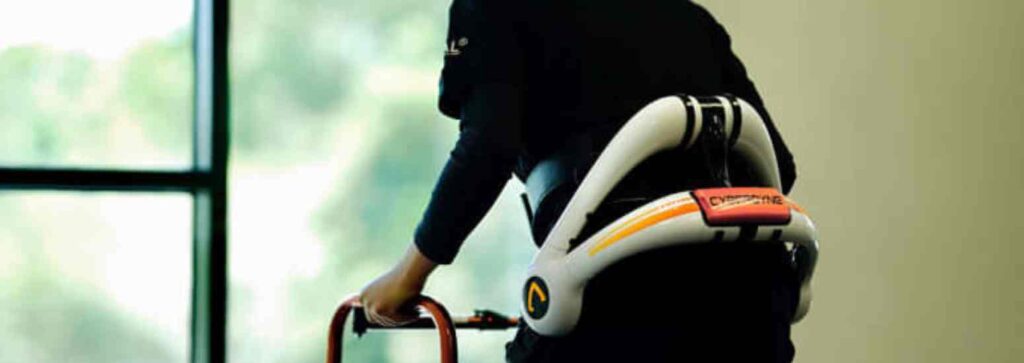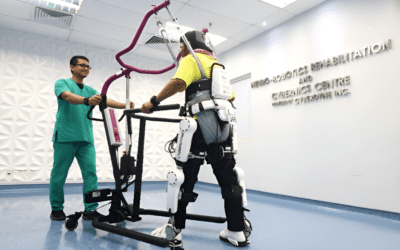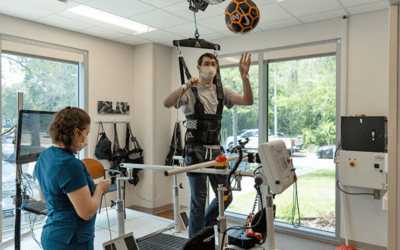The Hip rehabilitation process starts with becoming accustomed to regular movements and practising daily activities, such as getting in and out of bed or a chair. It then advances to practising more challenging tasks like climbing stairs and entering or exiting a car.
Post hip replacement, muscle strength is crucial for being able to carry out these and other tasks effectively.
Let’s look at the types of HIP replacement
1. Total Hip Replacement (THR): This is the most common type of hip replacement, where both the acetabulum (hip socket) and the femoral head (upper end of the thigh bone) are replaced.
2. Partial Hip Replacement: Also known as hemiarthroplasty, this procedure replaces only the femoral head.
3. Hip Resurfacing: This is a less invasive procedure where the socket is replaced, and the femoral head is capped with a smooth metal covering, preserving more of the bone.
How to achieve a speedy recovery from hip replacement surgery
After your hip replacement surgery, you will stay in the hospital for one night to receive attentive care and begin initial post-operative activities under supervision. Our skilled medical team is fully committed to supporting you at every phase of your recovery journey.
Once home, you’ll need assistance with daily activities for at least the first week to ensure a safe environment as you navigate with your new hip. Avoid strenuous activities for 6 to 12 weeks to prevent dislocations and ensure proper joint healing. You’ll follow a tailored physiotherapy programme to restore mobility and strength. These exercises are crucial for recovery and improving comfort with the new hip’s functionality.

At PERKESO rehabilitation in Malaysia and we offer various amenities and services with advance neuro technologies to assist patients as they progress through their recovery. We use a variety of techniques to minimise pain and promote healing, ensuring a smooth recovery process for patients after their injury.
Physical therapy sessions
Our skilled therapists create exercise programmes to improve joint flexibility, strength, and range of motion. Physiotherapy sessions help to restore mobility and enhance overall physical function after rehabilitation.
Occupational therapy
We provide support with daily activities to encourage independence and facilitate a seamless return to daily life. Occupational therapy assists patients in regaining functionality and adapting to any limitations.
Specialised exercises and rehabilitation programmes
Our customised programmes accelerate recovery and improve functional outcomes. They are tailored to meet individual needs and aid patients in regaining their mobility and independence as quickly as possible.
Patient education
We offer thorough information and education on post-operative care, precautions, and lifestyle adjustments. This helps patients actively engage in their recovery and make informed decisions about their well-being.
The aim is to.
- We will focus on transitioning from using two sticks to just one to enhance mobility.
- We will concentrate on gait re-education, aiming to improve your walking pattern and balance.
- Additionally, we will work on strength exercises to bolster your overall stability.
- Building confidence through these efforts is crucial.
- Lastly, we will remind you to remember hip precautions to recover successfully.

Nutrition & Support
Our comprehensive approach to patient care includes personalised nutritional support and guidance. We recognise the pivotal role of proper nutrition in the healing and well-being of our patients. Our team provides tailored nutritional advice to ensure each patient receives the nutrients necessary for a successful recovery.
Continuous care
Our experienced medical staff is committed to closely monitoring our patients’ progress during their neuro recovery. By closely monitoring their progress, we can promptly address any concerns and make necessary adjustments to ensure a safe and effective rehabilitation process. This careful oversight allows us to provide our patients with the highest care and support.
Advanced technologies
Advanced neuro robots are used to rehabilitate chronically injured patients. Even when patients regained walking ability in the hospital, many struggled to maintain it and would go back to using wheelchairs after returning home. PERKESO Rehabilitation Centre, Malaysia has cutting-edge technologies that enable patients to keep walking without crutches using robotic devices.
To learn more, contact our patient coordinators today so that they can walk you through the recovery process with the help Cyberdyne, Vibramoov and other technologies at Perkeso Rehabilitation Centre.
References
Surgical Dislocation of the Hip | Children’s Hospital of Philadelphia. https://www.chop.edu/treatments/surgical-dislocation-hip
Hip, Hip, Hooray!!! Understanding Hip Osteoarthritis and Hip Replacements. https://www.visiblebody.com/blog/hip-hip-hooray-a-look-at-hip-osteoarthritis-and-hip-replacements



